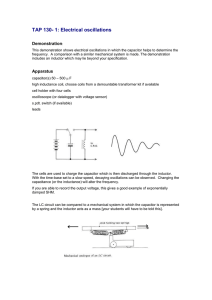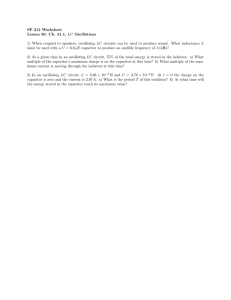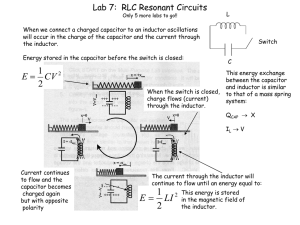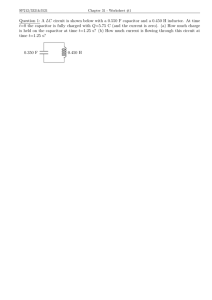LC Oscillations
advertisement
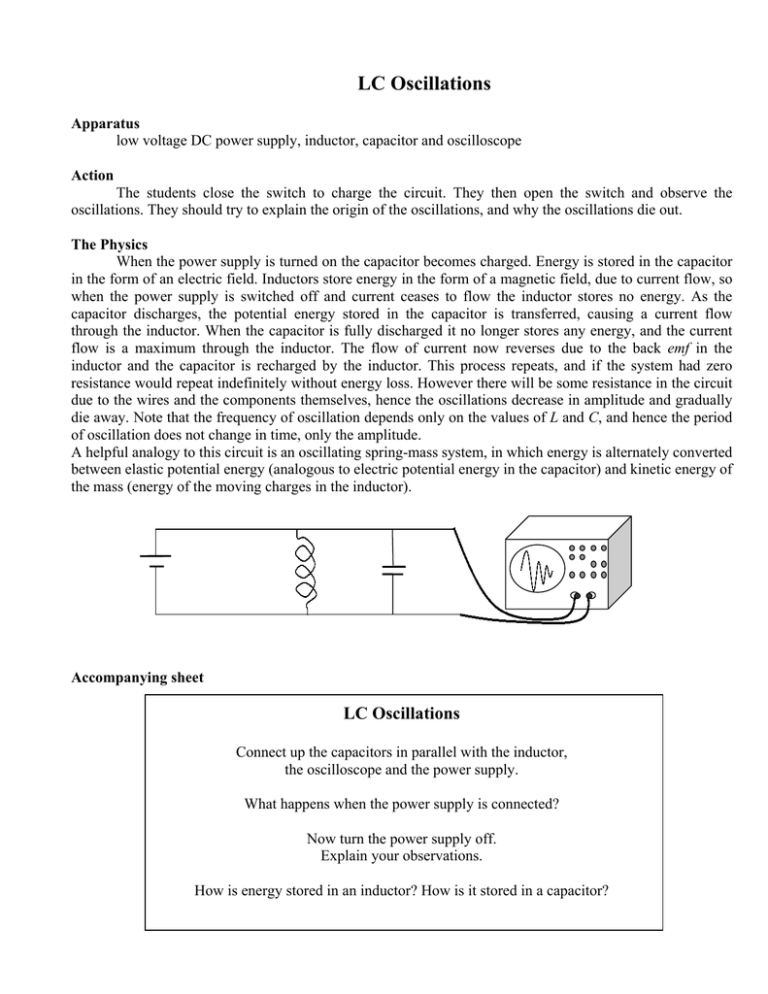
LC Oscillations Apparatus low voltage DC power supply, inductor, capacitor and oscilloscope Action The students close the switch to charge the circuit. They then open the switch and observe the oscillations. They should try to explain the origin of the oscillations, and why the oscillations die out. The Physics When the power supply is turned on the capacitor becomes charged. Energy is stored in the capacitor in the form of an electric field. Inductors store energy in the form of a magnetic field, due to current flow, so when the power supply is switched off and current ceases to flow the inductor stores no energy. As the capacitor discharges, the potential energy stored in the capacitor is transferred, causing a current flow through the inductor. When the capacitor is fully discharged it no longer stores any energy, and the current flow is a maximum through the inductor. The flow of current now reverses due to the back emf in the inductor and the capacitor is recharged by the inductor. This process repeats, and if the system had zero resistance would repeat indefinitely without energy loss. However there will be some resistance in the circuit due to the wires and the components themselves, hence the oscillations decrease in amplitude and gradually die away. Note that the frequency of oscillation depends only on the values of L and C, and hence the period of oscillation does not change in time, only the amplitude. A helpful analogy to this circuit is an oscillating spring-mass system, in which energy is alternately converted between elastic potential energy (analogous to electric potential energy in the capacitor) and kinetic energy of the mass (energy of the moving charges in the inductor). Accompanying sheet LC Oscillations Connect up the capacitors in parallel with the inductor, the oscilloscope and the power supply. What happens when the power supply is connected? Now turn the power supply off. Explain your observations. How is energy stored in an inductor? How is it stored in a capacitor?
